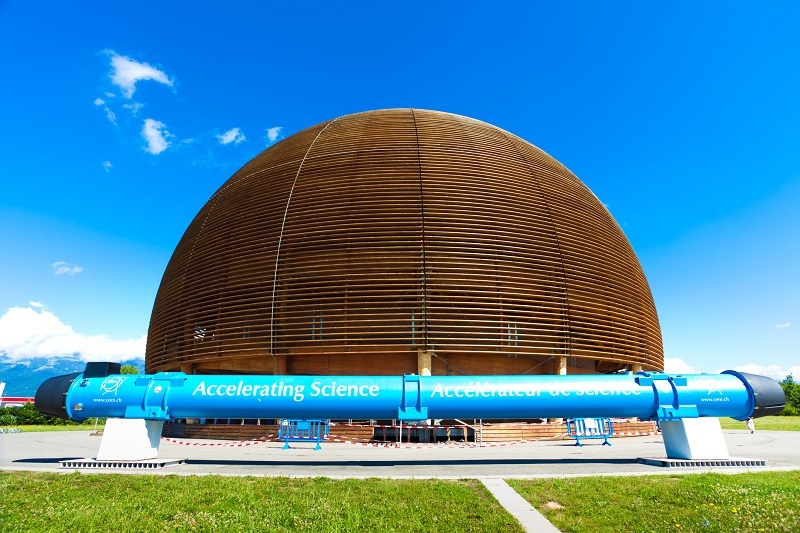
Physics is an exciting field with a wealth of groundbreaking research opportunities.
What makes physics so exciting? It’s the study of the universe! It offers opportunities to discover the unknown and redefine the known — not just for physicists’ own understanding, but for the advancement of the collective human knowledge of how things work. At the top of the exciting list of opportunities in physics is the prestigious ATLAS experiment taking place at the Large Hadron Collider (LHC).
Understanding CERN
CERN is an acronym for (the French translation of) the European Council for Nuclear Research. It was founded in 1954 and is located near Geneva. When CERN was established, it was devoted to understanding the atom. Because scientific understanding has grown well beyond the nucleus, CERN’s focus today is on particle physics. The council is dedicated to using state-of-the-art particle accelerators and detectors to enhance the world’s understanding of the universe.
Advancing Particle Physics: The Large Hadron Collider
The LHC is “the world’s largest and most powerful particle accelerator.” A particle accelerator is a device that uses electric fields to accelerate particle beams, and magnets to maneuver the beams in order to force a collision. The beams collide at particle detectors, which capture information about the particles. Physicists use that information to gain further understanding of the particles, which leads to further understanding of things like energy, matter, space, and time — i.e., the universe.
The LHC began its contributions to the world of physics research in 2008. The structure itself is more than 16 miles long, shaped like a ring, made of magnets that are colder than -450º Fahrenheit, and interspersed with accelerating structures. Particle beams travel in opposite directions inside the ring. These beams speed up as they hit each accelerator and the magnets guide them toward collision at each detector. All these functions and more are controlled from the CERN Control Centre.
The ATLAS Experiment
ATLAS is one of the LHC’s four particle detectors, the tools placed at the points of collision inside the LHC and used to identify properties of subatomic particles. The main purpose of the ATLAS experiment is to answer fundamental questions about particle physics:
- What are the basic building blocks of matter?
- What are the forces that govern their interactions?
- What happened to antimatter?
- What is “dark matter”?
- What was the early universe like and how will it evolve?
- How does gravity fit in?
ATLAS attempts to answer these questions by testing existing insights in hopes of expanding understanding beyond that of The Standard Model, a culmination of physicists’ discoveries and theories from the 1930s until today.
Radical Discoveries from the ATLAS Experiment
One revolutionary finding that can be attributed to ATLAS is that of the Higgs boson. Bosons are the particles that carry forces — the way photons carry the electromagnetic force. In the 1960s, the mathematical theory that explained bosons required them to have no mass, but experimentation showed that some bosons did, in fact, have large masses. This led to a theory that proposed the existence of an undiscovered field that gave mass to bosons.
The existence of that field could be proven if a particle (named the Higgs boson after a member of the team of theorists) was discovered. In 2012, the ATLAS experiment was responsible for observing a boson consistent with the Higgs boson. This led to a Nobel Prize in Physics for members of the team of theorists.
The Exciting World of Physics
The ATLAS experiment is just one small part of the LHC’s exciting opportunities; the LHC is just on small part of CERN’s exciting opportunities; and CERN is just one small part of physics’ exciting opportunities.
When you enter the field of physics, you literally open up a universe of possibilities. The contributions you make to the field will go beyond society and beyond the world. You can play a key role in unlocking the secrets hidden in the makeup of everything.
SMU and the ATLAS Experiment
From involvement in the search for and discovery of the Higgs boson to its measurement, the quest to find out more about particle physics, and beyond, the SMU Physics faculty and their graduate students are major contributors to the ATLAS experiment.
